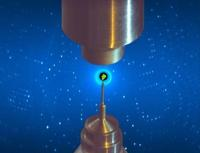Speaker
Description
Mucus is a highly viscoelastic secretion, covering the epithelia surfaces of several body tracts. Its function and composition differ at different locations, but its general task is to protect tissues from dehydration, mechanical stress, and to act as barrier against microorganisms and toxic substances. Mucus is mainly composed of water, lipids, small proteins and nucleic acids, but its mechanical properties are due to high molecular weight glycoproteins, mucins, which can establish adhesive interactions with particulates. The development of mucosal drug delivery vehicles is a great challenge because little is known about the interactions between mucin and macromolecules: they can rapidly penetrate or establish prolonged contact with mucus, depending on their specific formulation. We worked on the development of model mucus environments to deepen the understanding of mucin interactions with polymers used in pharmaceutical formulations by complementary techniques. Beside SAXS and SANS in bulk, we applied QCM-D and neutron reflectivity on thin mucin layers. Further, we developed a bio-inspired complex model consisting in a mucin layer on top of a single supported membrane, structurally investigated by neutron reflection. Since complexation between mucins and biomacromolecules takes place close to cell membrane surface, our model is potentially predictive of the fate of nanodrugs intended to cross mucus and enter epithelial cells.
Rondelli V., et al.,Int.J.Mol.Sci.(2019)

